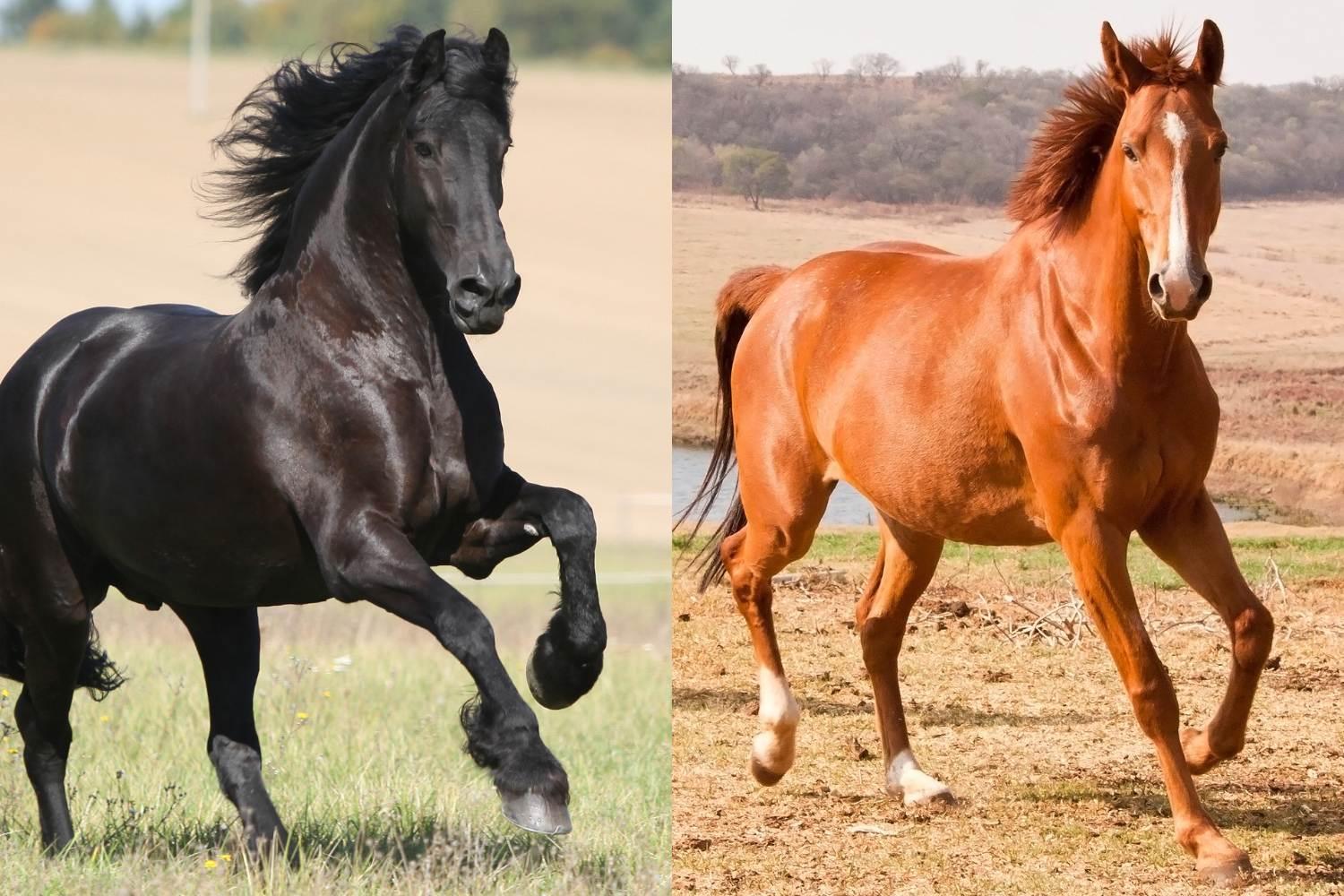"Extension" Black / Red Factor (E)
Gene or Region: MC1R
Reference Variant: C (E)
Mutant Variant: T (e)
Affected Breeds: Many
Research Confidence: High - Findings reproduced in multiple studies and strong association in studied population
Explanation of Results: E/E = Homozygous Black E/e = Heterozygous Black e/e = Red
General Description of Extension or Black/Red Factor
The black/red factor test (also known as “extension”) determines the underlying base color of a horse in the absence of any modifiers (such as agouti). A horse with the dominant “black” allele (E) is able to produce both black and red pigments. The recessive “red” allele (e) prevents the production of black pigment, resulting in a chestnut or sorrel base. Since black is completely dominant over red, heterozygous horses (E/e) have the appearance of the dominant allele (a black base color).
The agouti modifier is an example of the genetic concept of “epistasis” – that the effect of one gene is dependent on the effect of an independent gene. While extension determines whether a horse can produce black pigment, agouti controls where the black pigment will be located. In order for a horse to appear uniformly black, it must have at least one dominant allele at extension (E/E or E/e) and be homozygous recessive at agouti (a/a).
Gene Information
MC1R is a membrane bound receptor that regulates the production of pigmentation. Mutations in this gene have been well documented to result in a variety of coat colors in many species. In the horse, two alleles have been documented. This SNP is a single base change that alters an amino acid, likely changing the function of the encoded protein. A more rare MC1R allele (ea) causes a second amino acid substitution and interferes with the standard black/red factor genetic test, resulting in chestnut horses that genotype as black.
References
Marklund L et al., “A missense mutation in the gene for melanocyte-stimulating hormone receptor (MC1R) is associated with the chestnut coat color in horses.” (1996) Mamm Genome. 7: 895-9.
Wagner HJ and Reissmann M, “New polymorphism detected in the horse MC1R gene.” (2000) Anim Genet. 31: 289-90.
Rieder S et al., “Mutations in the agouti (ASIP), the extension (MC1R), and the brown (TYRP1) loci and their association to coat color phenotypes in horses (Equus caballus).” (2001) Mamm Genome. 12: 450-5.
More Horse Color Genetics
Congenital Stationary Night Blindness & Leopard Complex
Congential Stationary Night Blindness (CSNB) is characterized by the inability to see well in low light and no-light situations. It is linked to Leopard Complex Spotting (LP), where homozygous horses (LP/LP) will have CSNB. Congential Stationary Night Blindness is present at birth and is non-progressive.
Champagne
Champagne (CH) is a dilution that affects all coat colors. Champagne foals are born with pink skin and blue eyes that slightly darken with age. Adult champagne horses have a distinct pumpkin colored skin with mottling in the hairless regions, as well as amber/green/tan eyes. Horses with multiple dilutions can be difficult to accurately identify color without genetic testing.
Cream
Cream (CR) is a dilution that is characterized by diluting or lightening both black-based and red-based horses. A single CR allele lightens red pigment to Palomino but does not overtly affect Black pigment. Two CR alleles results in extreme dilution of the hair, skin, and eyes of any color, though black-based horses tend to retain more pigment than red-based horses.
